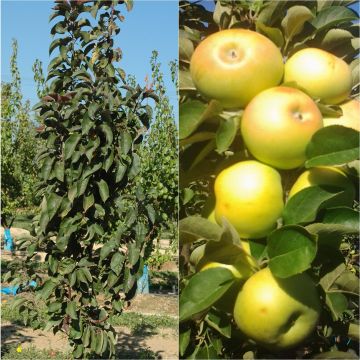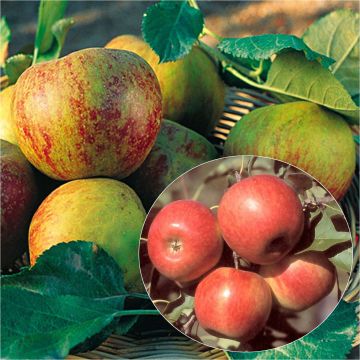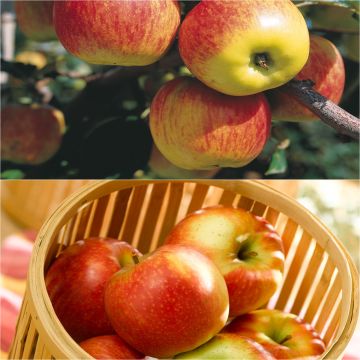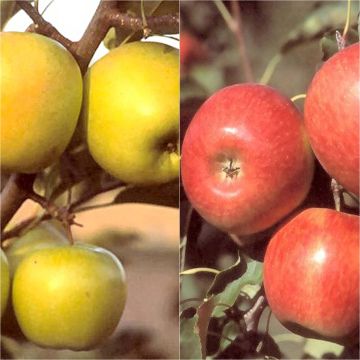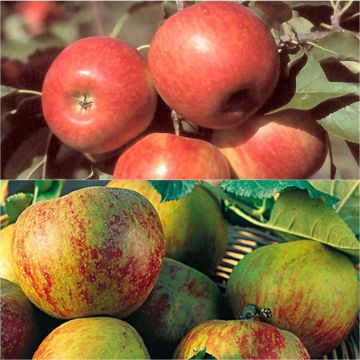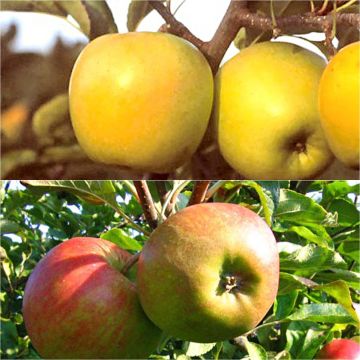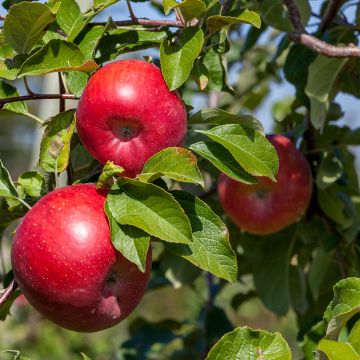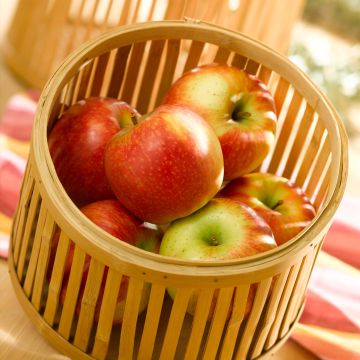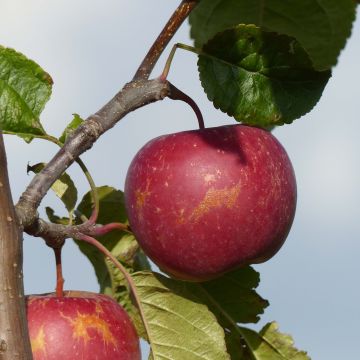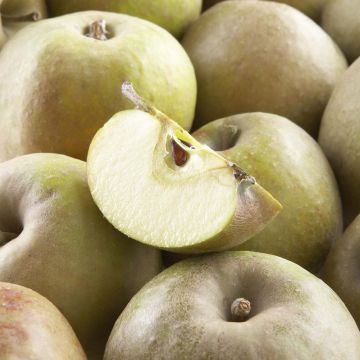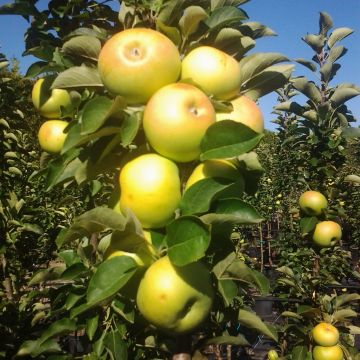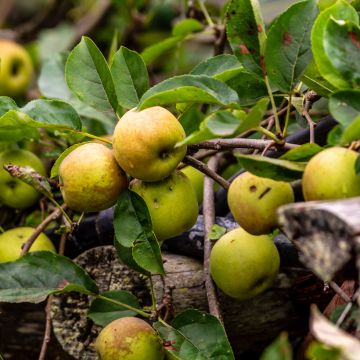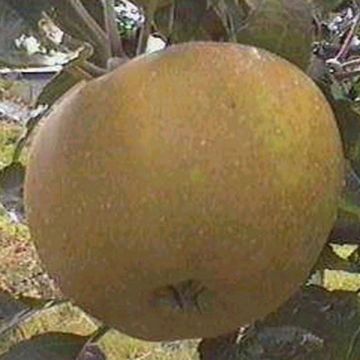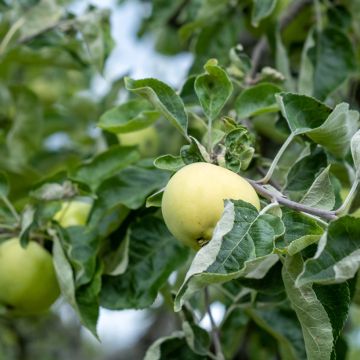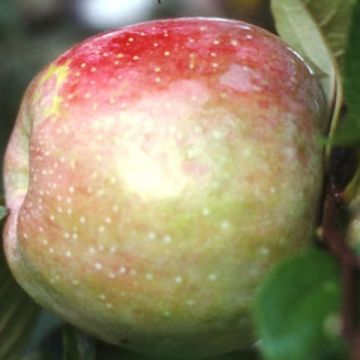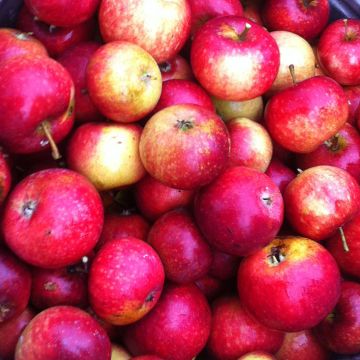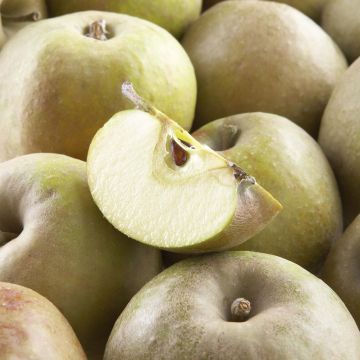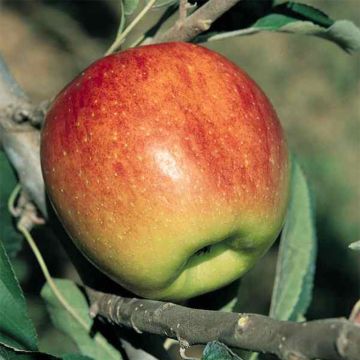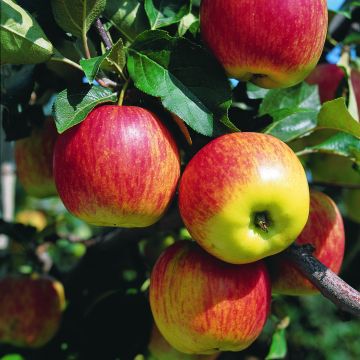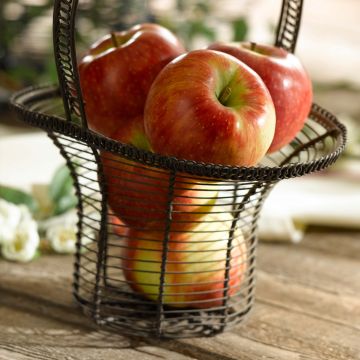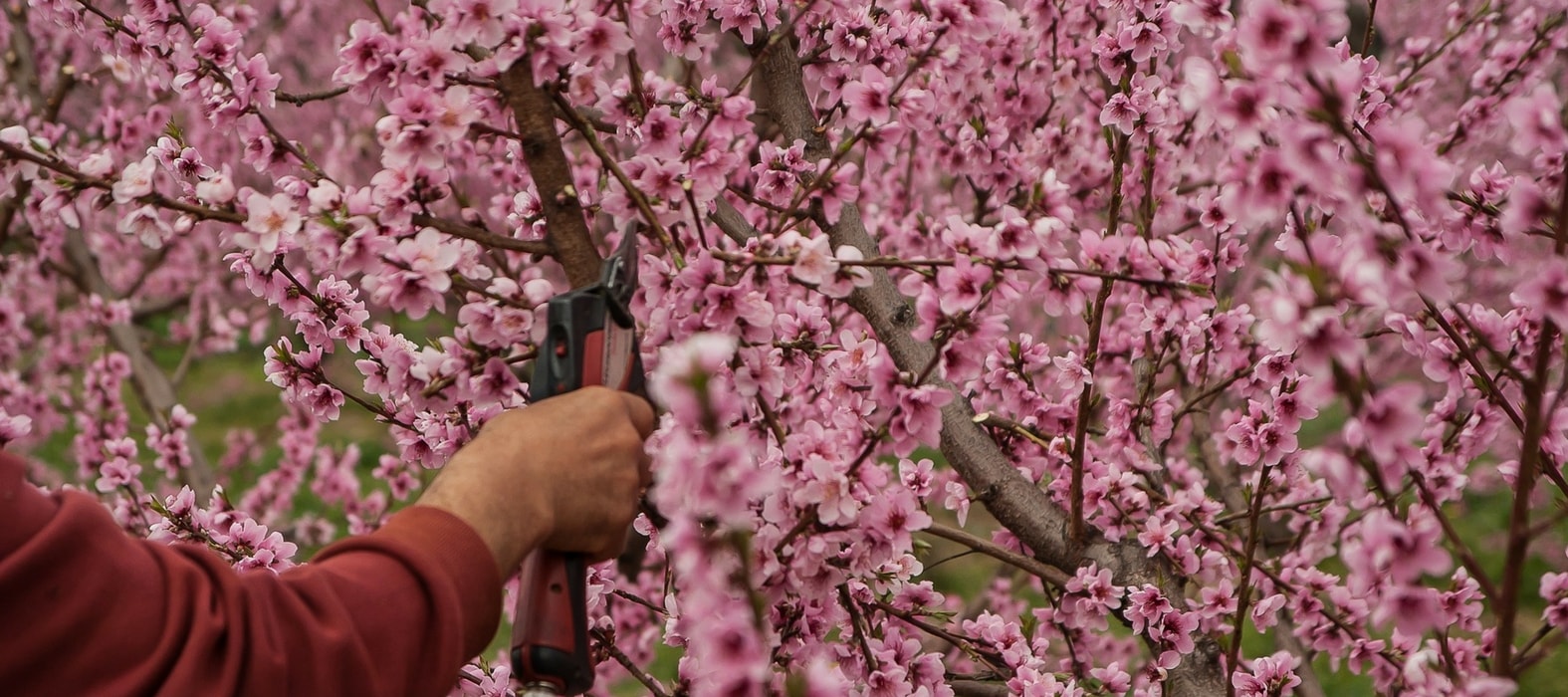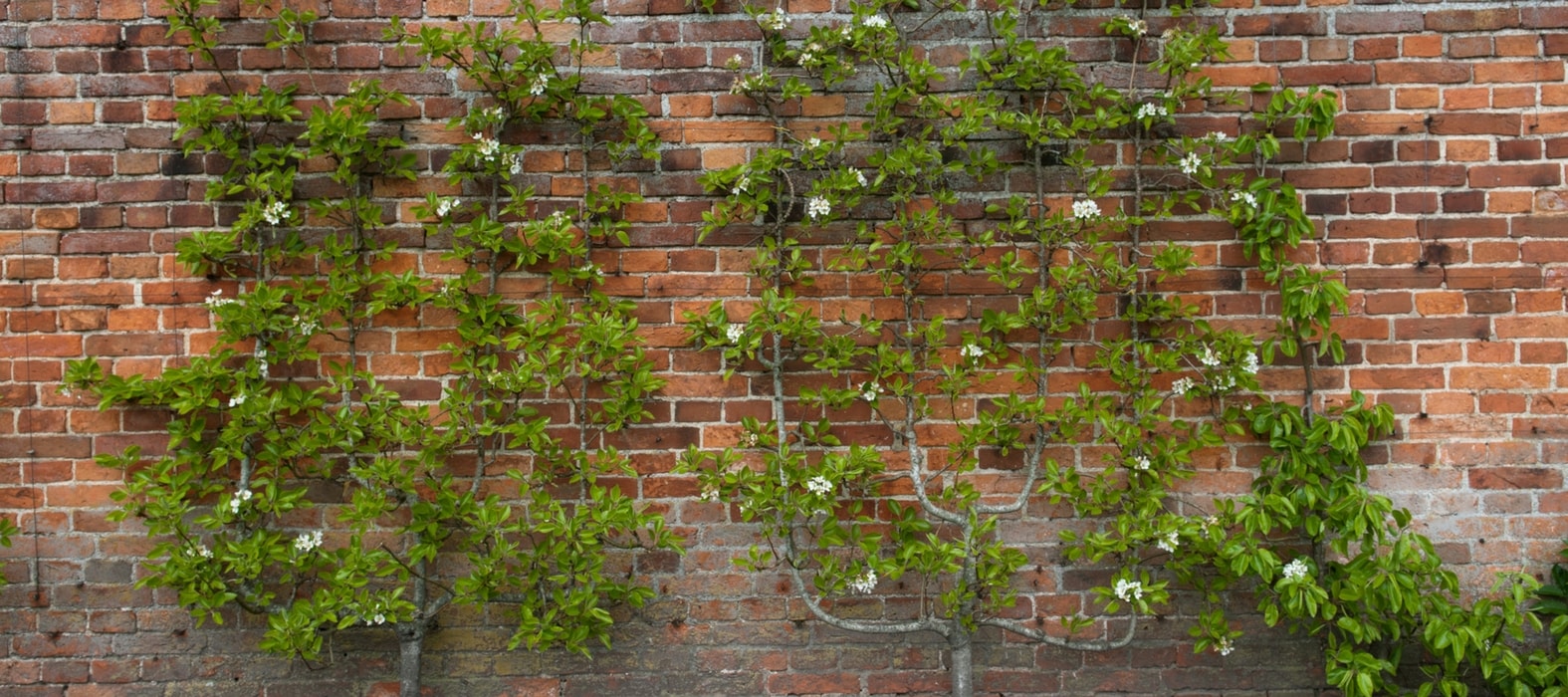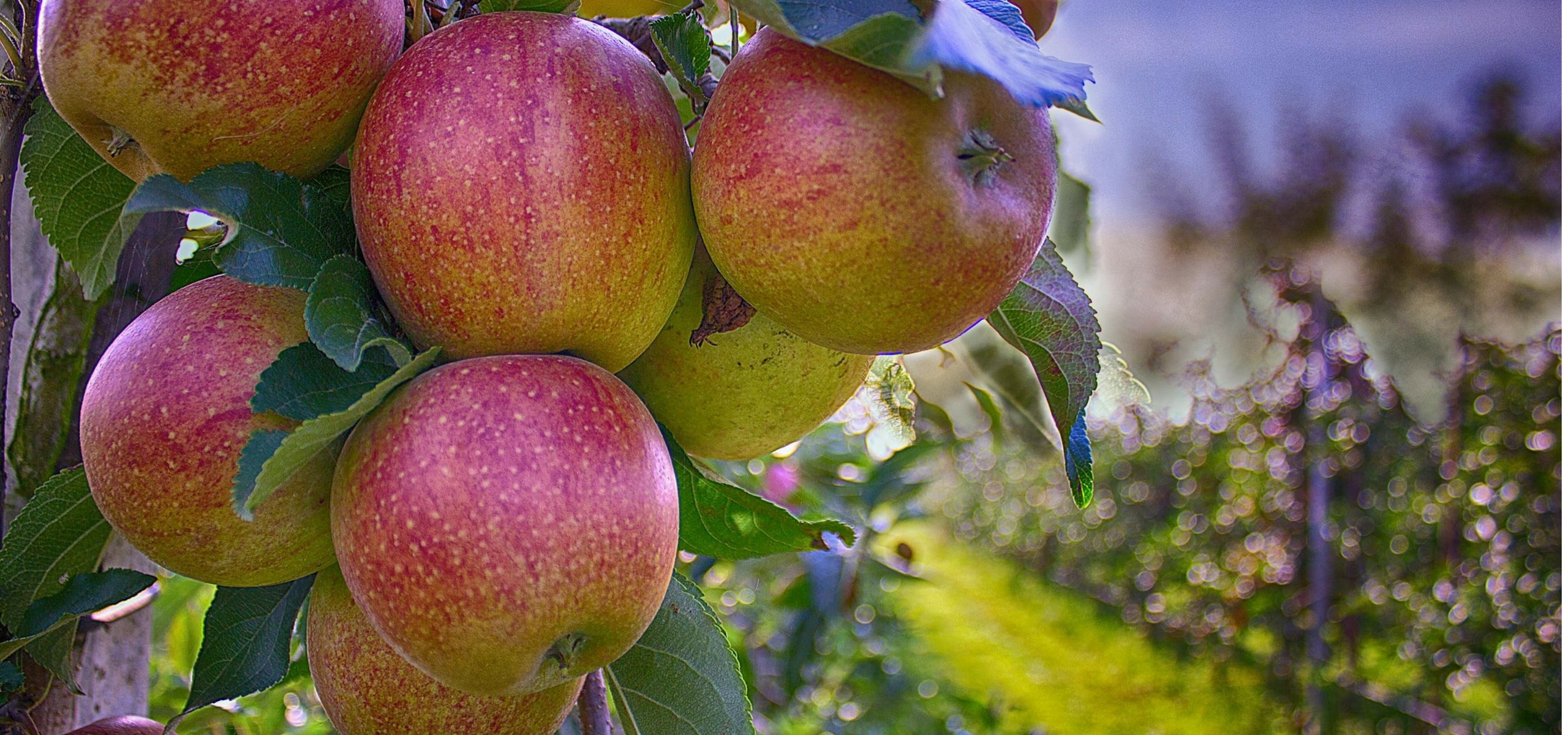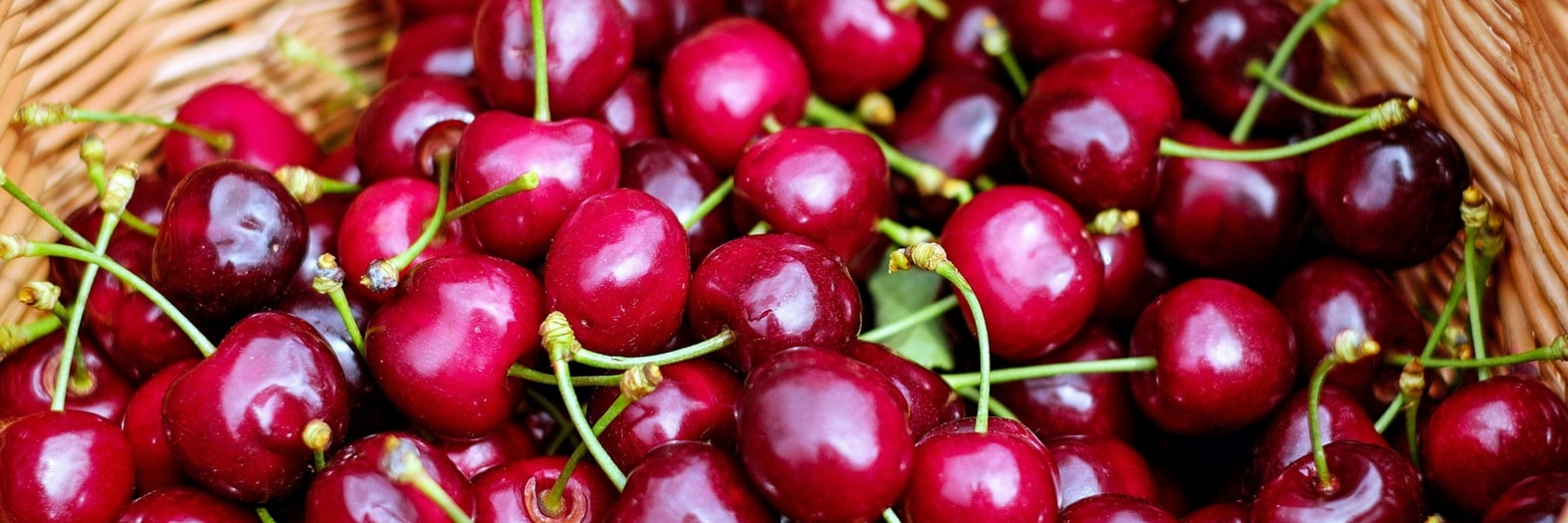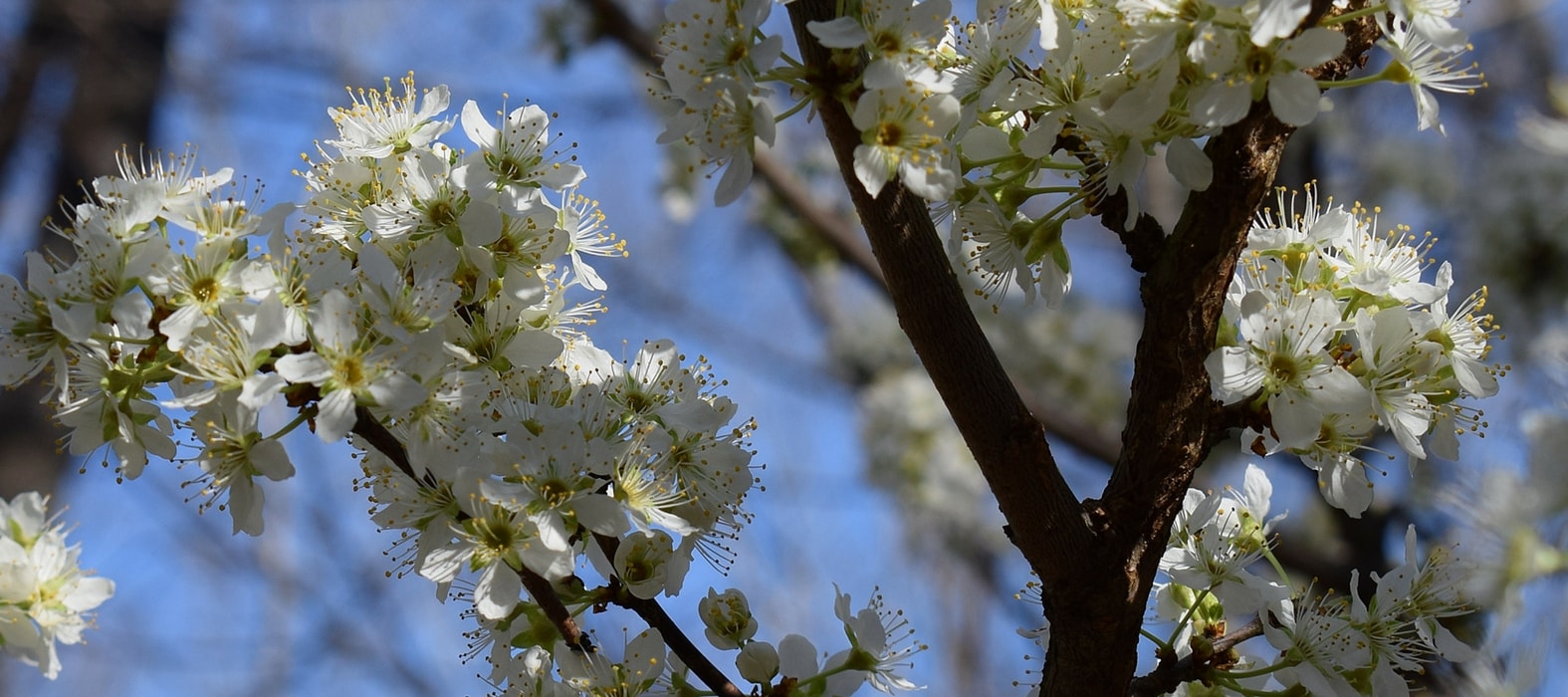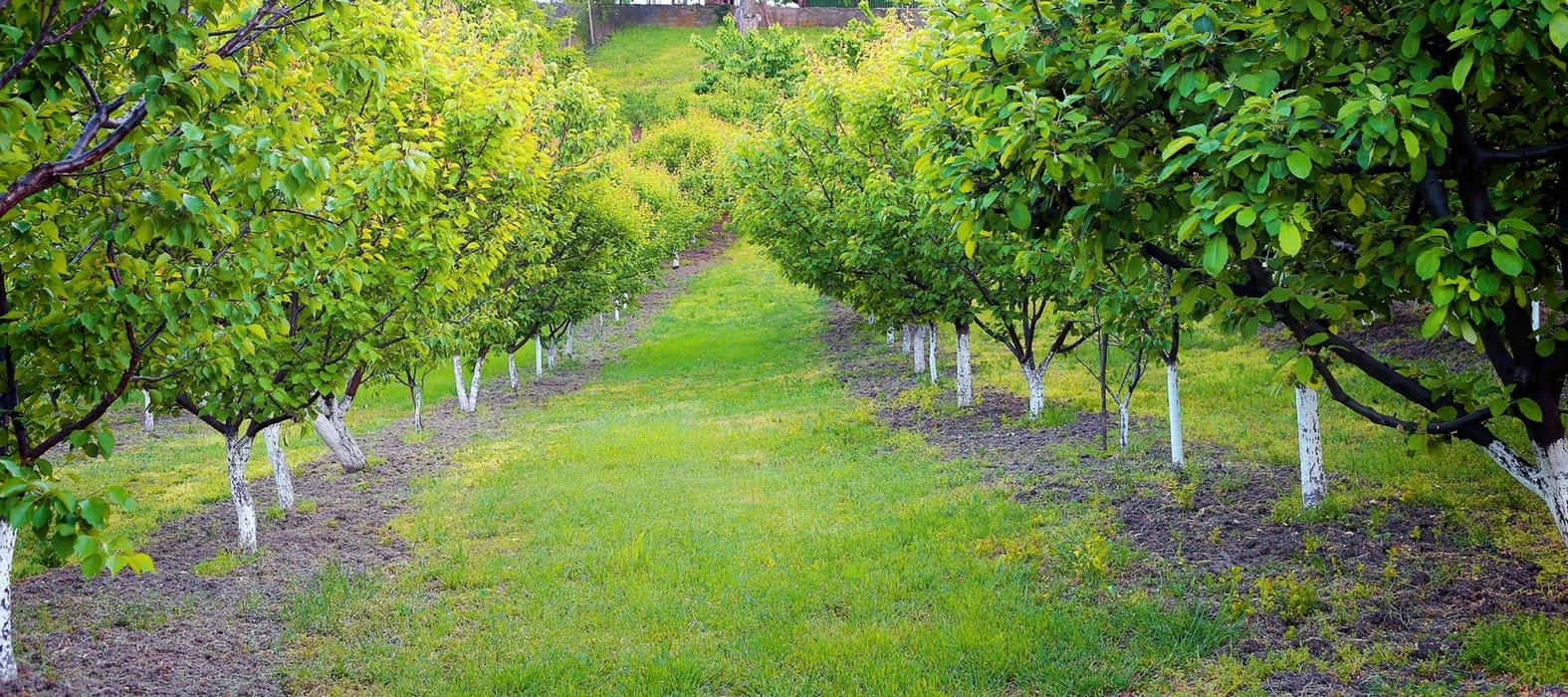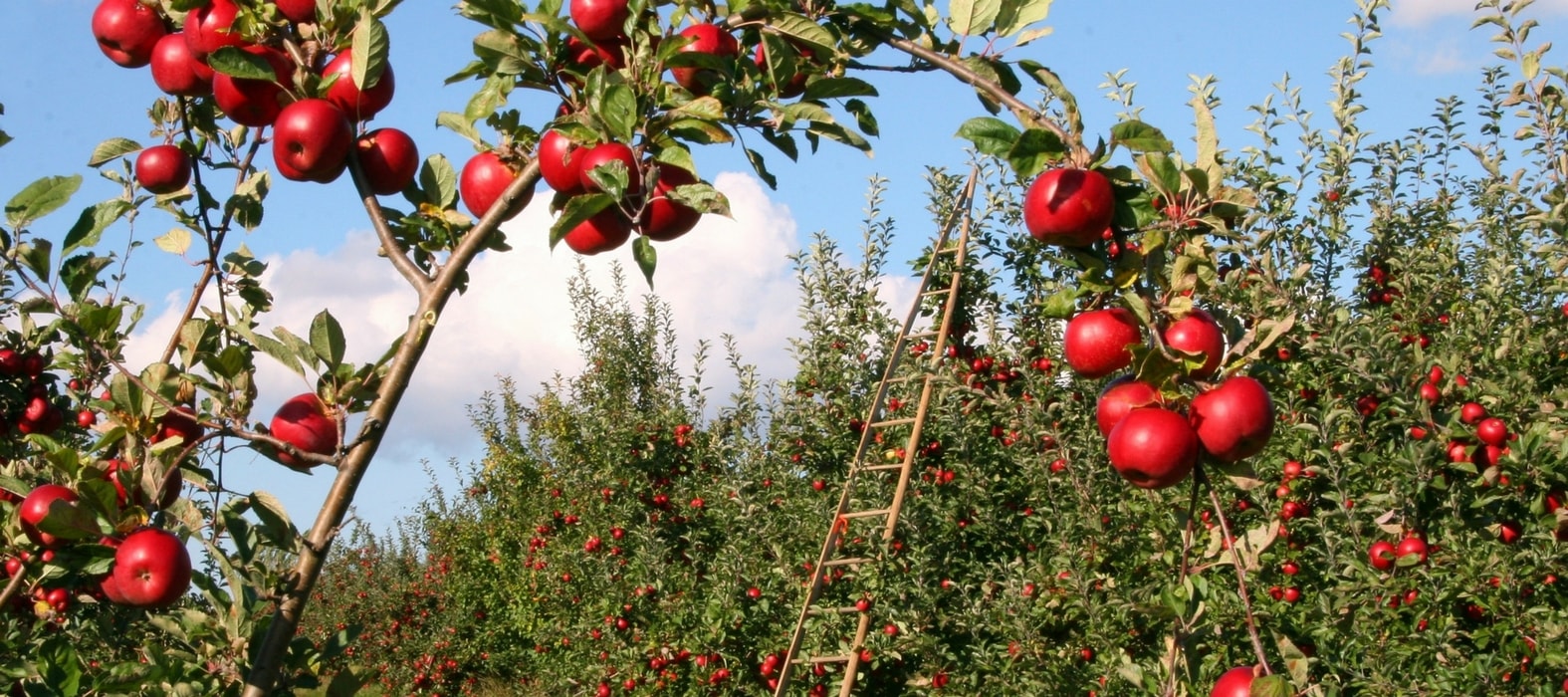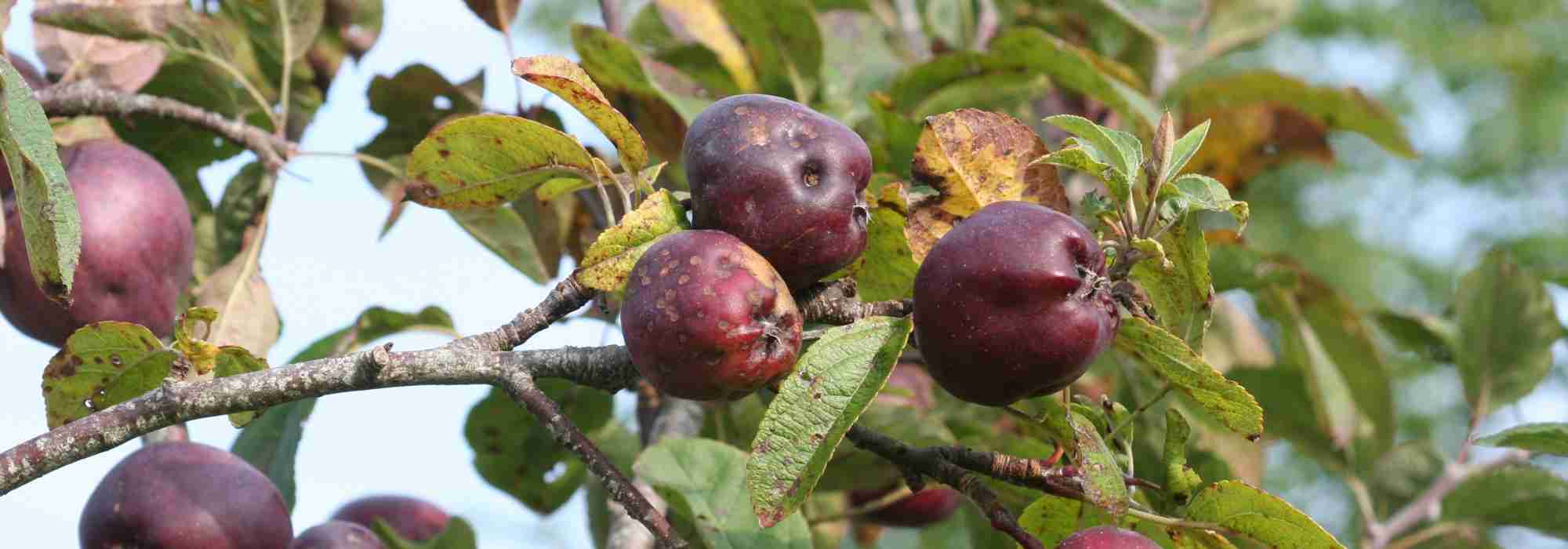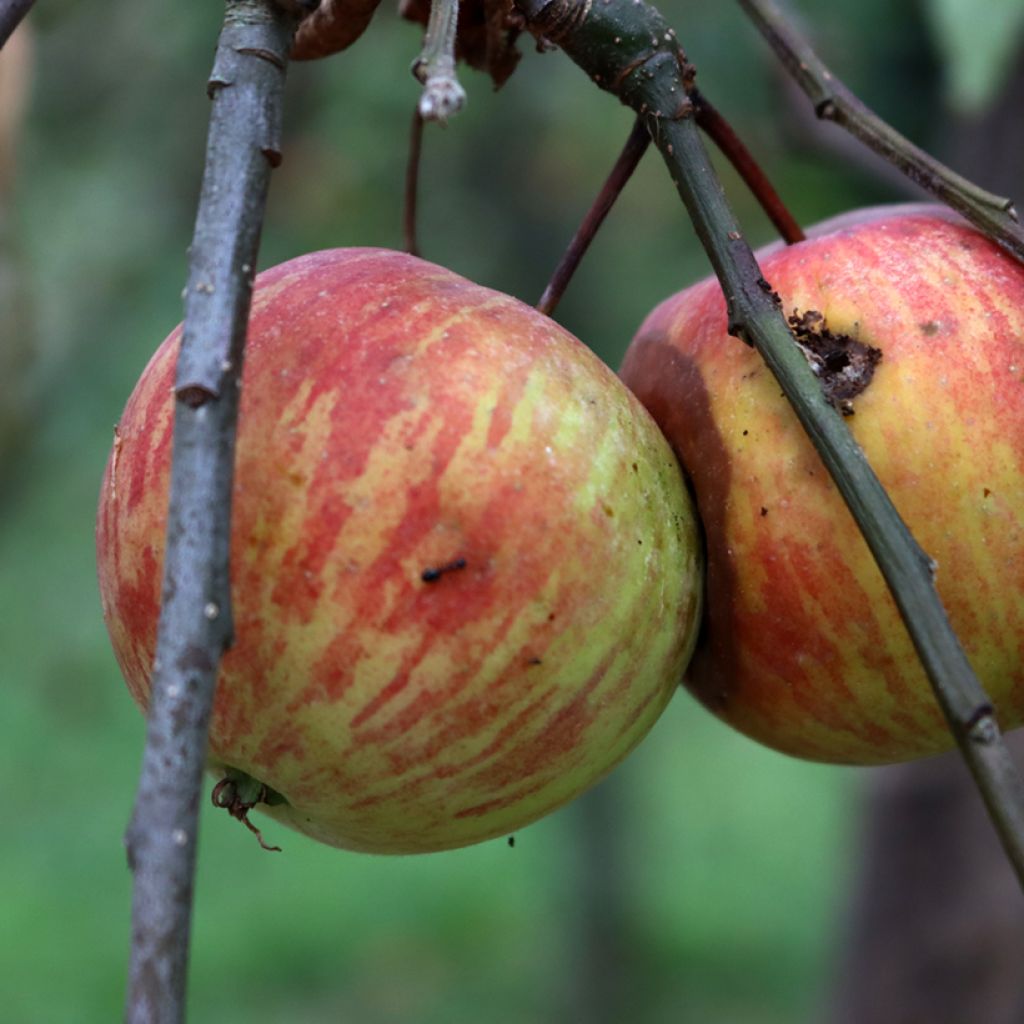

Apple Tree Korobówka - Malus domestica
Apple Tree Korobówka - Malus domestica
Malus domestica Korobówka
Apple
Special offer!
Receive a €20 voucher for any order over €90 (excluding delivery costs, credit notes, and plastic-free options)!
1- Add your favorite plants to your cart.
2- Once you have reached €90, confirm your order (you can even choose the delivery date!).
3- As soon as your order is shipped, you will receive an email containing your voucher code, valid for 3 months (90 days).
Your voucher is unique and can only be used once, for any order with a minimum value of €20, excluding delivery costs.
Can be combined with other current offers, non-divisible and non-refundable.
Why not try an alternative variety in stock?
View all →This plant carries a 6 months recovery warranty
More information
We guarantee the quality of our plants for a full growing cycle, and will replace at our expense any plant that fails to recover under normal climatic and planting conditions.
Description
The Apple Tree 'Korobówka' (or 'Pierre Le Grand') is an old variety originating from Crimea that was introduced to France in 1853. It is a so-called 'harvesting apple', meaning ripens at the same time as wheat or oat harvests. It ripens from early August. The fruits are small, weighing around 60 g, slightly flattened, yellow in colour with strong dark red streaks. The flesh is yellowish, dense, firm, and crisp, with a very pleasant, slightly spicy, mildly tangy sweet and sugary flavour. It is said to have a honey-like taste and an exquisite aroma. Self-sterile, it requires the presence of other apple tree varieties to improve pollination.
The Malus domestica Korobówka is an old variety also known as Pierre le Grand, Mieduniczka, Renetka. The tree forms a pyramidal crown when young. The crown of older trees takes on a broad, rounded shape. At maturity, it can reach approximately 4 to 5 m in height with a spread of 3 to 4 m. The variety is frost-resistant but susceptible to scab. Its foliage consists of large, ovate, deeply dentate, brownish-green leaves on top, greenish-white underneath. The semi-late flowering occurs in early May, which usually protects it from frost. The apple tree is thus suitable for cultivation in all regions. The flowers are destroyed by frost at temperatures below -2 to -3°C. It is said to be self-sterile, which is why the presence of apple trees that flower at the same time is necessary. The varieties Court Pendu, Cox Orange, Golden Delicious, Granny Smith, Reinette Clochard, Reine des Reinettes, Reinette du Mans, Reinette Etoilée, Royal Gala, Winter Banana or any other semi-late flowering variety are suitable for cross-pollination. Ornamental apple trees suh as the Malus Perpetu Evereste and John Downie flower abundantly and can be excellent pollinators.
The Korobówka Apple Tree is a fairly vigorous variety. Up to 70 kg of apples can be harvested from a single crop. The homogeneous and abundant fruits ripen between August and September.
The apples can be eaten both raw and cooked, in compotes, pastries, paired with cheeses, or as an accompaniment to savoury dishes such as black pudding, pork, or in salads. Easy to consume, these apples provide great satiety.
The apples can be stored for part of the winter. Storage can be done in a cool, dry place, away from light at a temperature of around 8 to 10°C or in a cold room airtight to external air at a temperature of 1 to 3°C. The apples releases ethene, a gas that promotes fruit ripening. To speed up the ripening of your other fruit or vegetables, place your apples right next to them.
Very popular thanks to its fruits, this apple tree will find its perfect place in the garden for the enjoyment of young and old alike. Among a wide range of apple trees, it is easy to find the variety that best suits your wishes.
Plant habit
Fruit
Flowering
Foliage
Botanical data
Malus
domestica
Korobówka
Rosaceae
Apple
Malus domestica Pierre le Grand, Mieduniczka, Renetka
Russia
Other Apple trees
View all →Planting and care
Choose a sunny spot for your 'Korobówka' Apple Tree. The soil can be slightly chalky or acidic, but not excessively so. Dig a wide planting hole at least 3 times the volume of the root ball. Add organic matter (compost, manure, etc.) and a base fertiliser such as ground horn simultaneously. Do not bury the graft junction. Stake if necessary. For apple trees planted in isolation and exposed to wind, it may be beneficial to stake them using a guy-wire system: plant 3 stakes in a triangle 50 cm around the trunk, join them with pieces of wood. Protect the bark with a piece of rubber, for example, and attach the stakes to the trunk with metal wires. Water generously, even in winter, even if it rains. Fruit trees are ideally planted between October and March, outside frost periods. Container-grown plants can be planted year-round, except during extreme heat or frost.
In winter, you can add a small spadeful of wood ash rich in potash at the base of the tree and lightly worked into the soil surface to improve fruiting. Apple trees can be susceptible to various diseases and pests. To minimise risks, space trees sufficiently, plant mixed-species hedges, fit nest boxes or insect shelters to attract beneficial wildlife. In short: prioritise diversity. The main diseases affecting apple trees are scab (brown spots on leaves), brown rot (withering of flowers and fruit rot on the tree), and powdery mildew (white felting on leaves). For these three cases, preventive action is preferred by spraying a horsetail decoction; as a last resort during severe attacks, a curative treatment with a Bordeaux mixture can be applied. Regarding pests, the codling moth (or fruit worm), a small caterpillar from a moth's eggs, burrows into the fruit. To combat this, preventive measures such as encouraging blue tits and bats by fitting nest boxes are best. For aphid infestations, spray a solution of tar soap.
During harvesting in September-October, only keep picked (not fallen) apples. For optimal storage, place apples with their pedunculate end downwards in crates or trays. Choose a preferably completely dark, dry, and cool but frost-free storage area.
Planting period
Intended location
Care
Planting & care advice
This item has not been reviewed yet - be the first to leave a review about it.
Haven't found what you were looking for?
Hardiness is the lowest winter temperature a plant can endure without suffering serious damage or even dying. However, hardiness is affected by location (a sheltered area, such as a patio), protection (winter cover) and soil type (hardiness is improved by well-drained soil).

Photo Sharing Terms & Conditions
In order to encourage gardeners to interact and share their experiences, Promesse de fleurs offers various media enabling content to be uploaded onto its Site - in particular via the ‘Photo sharing’ module.
The User agrees to refrain from:
- Posting any content that is illegal, prejudicial, insulting, racist, inciteful to hatred, revisionist, contrary to public decency, that infringes on privacy or on the privacy rights of third parties, in particular the publicity rights of persons and goods, intellectual property rights, or the right to privacy.
- Submitting content on behalf of a third party;
- Impersonate the identity of a third party and/or publish any personal information about a third party;
In general, the User undertakes to refrain from any unethical behaviour.
All Content (in particular text, comments, files, images, photos, videos, creative works, etc.), which may be subject to property or intellectual property rights, image or other private rights, shall remain the property of the User, subject to the limited rights granted by the terms of the licence granted by Promesse de fleurs as stated below. Users are at liberty to publish or not to publish such Content on the Site, notably via the ‘Photo Sharing’ facility, and accept that this Content shall be made public and freely accessible, notably on the Internet.
Users further acknowledge, undertake to have ,and guarantee that they hold all necessary rights and permissions to publish such material on the Site, in particular with regard to the legislation in force pertaining to any privacy, property, intellectual property, image, or contractual rights, or rights of any other nature. By publishing such Content on the Site, Users acknowledge accepting full liability as publishers of the Content within the meaning of the law, and grant Promesse de fleurs, free of charge, an inclusive, worldwide licence for the said Content for the entire duration of its publication, including all reproduction, representation, up/downloading, displaying, performing, transmission, and storage rights.
Users also grant permission for their name to be linked to the Content and accept that this link may not always be made available.
By engaging in posting material, Users consent to their Content becoming automatically accessible on the Internet, in particular on other sites and/or blogs and/or web pages of the Promesse de fleurs site, including in particular social pages and the Promesse de fleurs catalogue.
Users may secure the removal of entrusted content free of charge by issuing a simple request via our contact form.
The flowering period indicated on our website applies to countries and regions located in USDA zone 8 (France, the United Kingdom, Ireland, the Netherlands, etc.)
It will vary according to where you live:
- In zones 9 to 10 (Italy, Spain, Greece, etc.), flowering will occur about 2 to 4 weeks earlier.
- In zones 6 to 7 (Germany, Poland, Slovenia, and lower mountainous regions), flowering will be delayed by 2 to 3 weeks.
- In zone 5 (Central Europe, Scandinavia), blooming will be delayed by 3 to 5 weeks.
In temperate climates, pruning of spring-flowering shrubs (forsythia, spireas, etc.) should be done just after flowering.
Pruning of summer-flowering shrubs (Indian Lilac, Perovskia, etc.) can be done in winter or spring.
In cold regions as well as with frost-sensitive plants, avoid pruning too early when severe frosts may still occur.
The planting period indicated on our website applies to countries and regions located in USDA zone 8 (France, United Kingdom, Ireland, Netherlands).
It will vary according to where you live:
- In Mediterranean zones (Marseille, Madrid, Milan, etc.), autumn and winter are the best planting periods.
- In continental zones (Strasbourg, Munich, Vienna, etc.), delay planting by 2 to 3 weeks in spring and bring it forward by 2 to 4 weeks in autumn.
- In mountainous regions (the Alps, Pyrenees, Carpathians, etc.), it is best to plant in late spring (May-June) or late summer (August-September).
The harvesting period indicated on our website applies to countries and regions in USDA zone 8 (France, England, Ireland, the Netherlands).
In colder areas (Scandinavia, Poland, Austria...) fruit and vegetable harvests are likely to be delayed by 3-4 weeks.
In warmer areas (Italy, Spain, Greece, etc.), harvesting will probably take place earlier, depending on weather conditions.
The sowing periods indicated on our website apply to countries and regions within USDA Zone 8 (France, UK, Ireland, Netherlands).
In colder areas (Scandinavia, Poland, Austria...), delay any outdoor sowing by 3-4 weeks, or sow under glass.
In warmer climes (Italy, Spain, Greece, etc.), bring outdoor sowing forward by a few weeks.






























